D
Dave Coster
Guest
DIFFERENT TACTICS
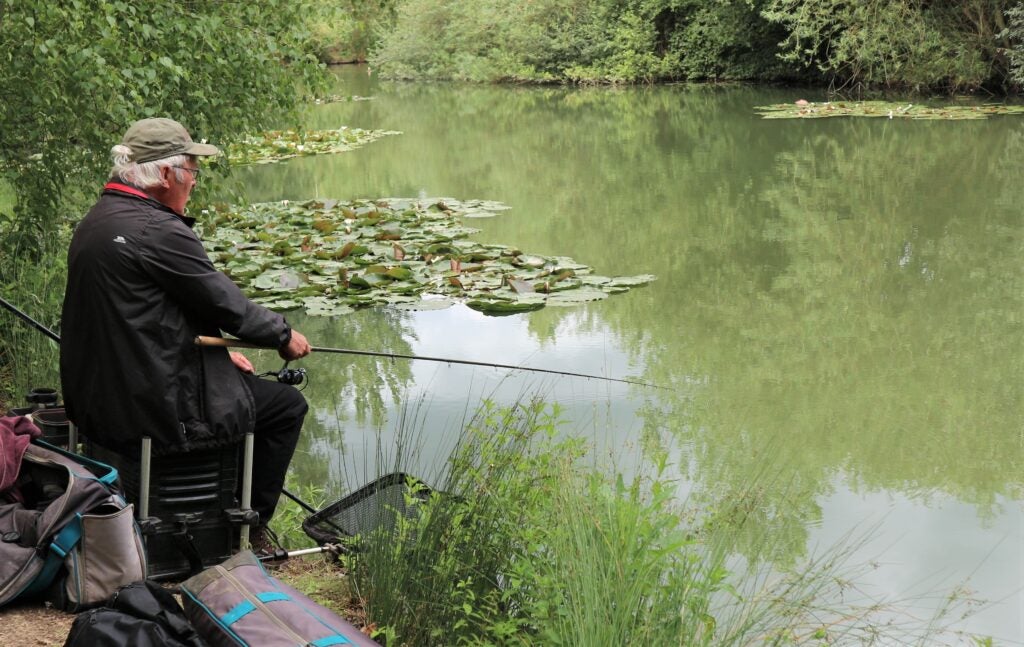
Pellets have gradually changed the way I fish. For the majority of sessions I normally take some of this bait with me, even when I’m primarily using naturals like maggots, casters, hemp or worms. If it’s not going to be an all-out pellet attack, having some in reserve can be a good way of getting out of trouble. Pellets often help to sort out small fish problems, also coming in useful when you stumble across venues that are heavily spodded for carp, which tends to make all the other species reliant on this type of bait. But the main point is, I find I am relying more and more on pellets, which I’m sure is the case with many anglers. They’re a great convenience bait to have with you, whether bagged or boxed. The products have a long lifespan, so they keep well. It’s only when I use pellets exclusively that more serious preparation comes into play, selecting certain sizes, colours, types and flavours, carefully nurturing baits into how I want them to perform.
THE BASICS
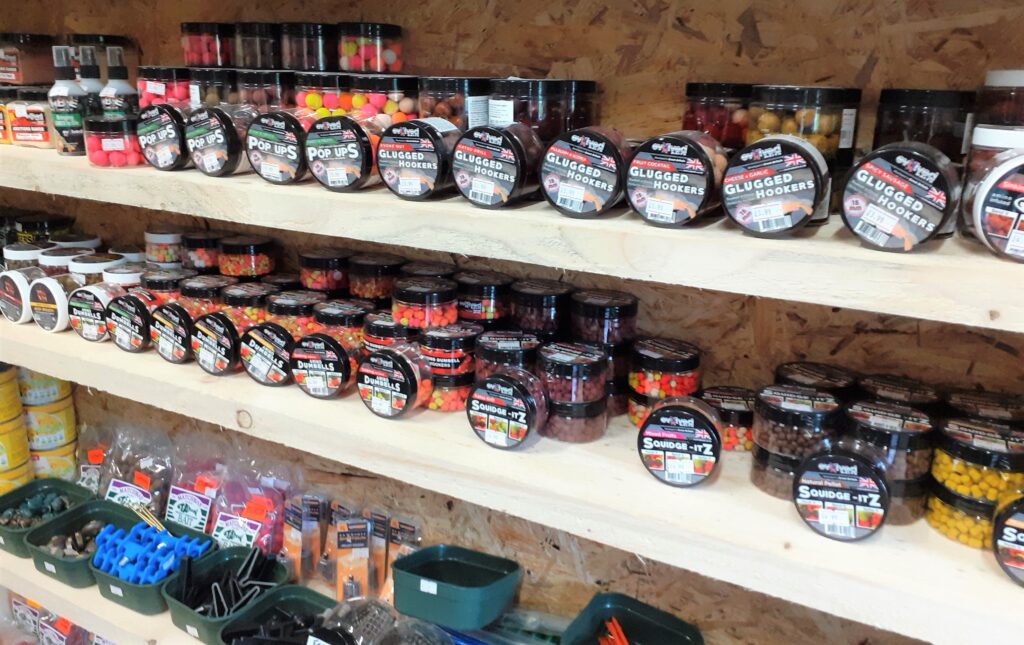
Micro pellets are a great way of kick-starting sessions, whether fed neat in a pole cup, mixed with groundbait, or introduced with various types of feeders. Micros make the fish grub around and hold them for long periods. Larger feed pellets need to be fed far more sparingly. The 4mm size is good for mixed species, while 6mm and 8mm grades are better for all-out big fish tactics. Feed pellets sink of their own accord, in both wet or dry form. I prefer to slightly dampen mine, because the infused moisture adds weight and helps gain better catapult distance. Soft, ready-to-use hooker pellets are always a good stand-by, useful if you don’t want to fiddle about with bands and hair rigs. But then we have glugged hookers, dumbbells, mini boilies and wafters, all available in a massive choice of colours, flavours and sizes. Tackle shops are crammed with these choices, which work wonders on the hook as change or main baits when fishing with pellet products.
BETTER HOOKERS
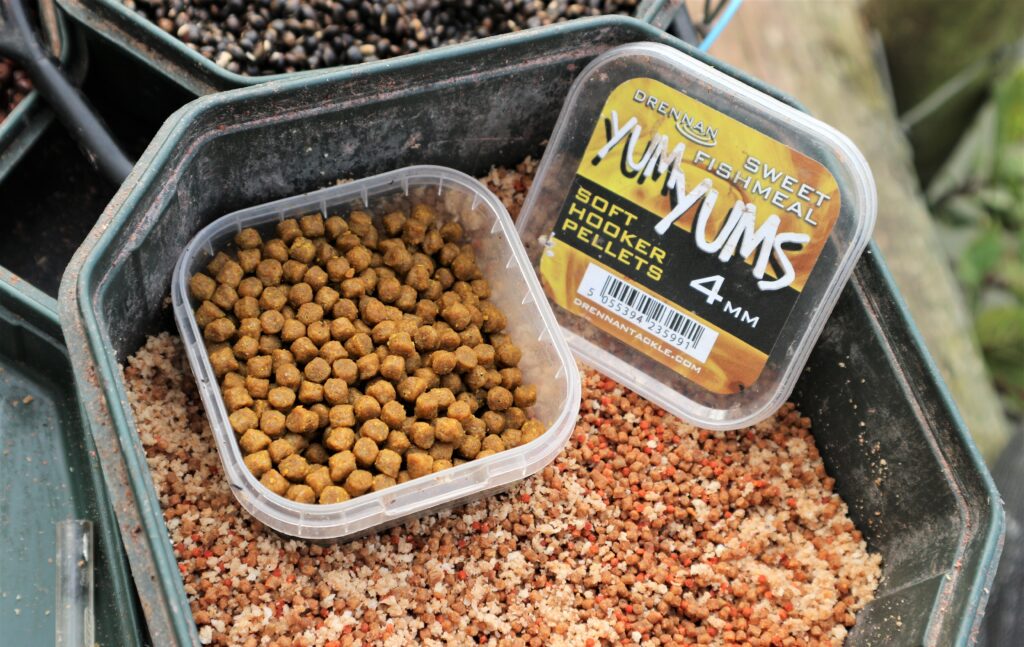
It pays to be fussy with hooker pellets because a lot are simply not up to the task. Don’t bother with super soft or crumbly ones because they won’t stay on the hook very well. But having said that, you also don’t want hooker pellets that are too hard, because fussy fish on heavily pressured waters respond less well to tough baits. I think the consistency of Drennan hook pellets is spot-on, although I don’t like their daft Yum Yums name. Flavours that stand out are Sweet Fishmeal and Crab & Krill. I particularly like the 4mm size, which is perfect for silver fish. Durable Pellets from Dynamite have impressed too, being robust enough to stay attached with waggler or feeder rigs, while soft enough to strike through. I have to say, a lot of so-called hooker pellets I have experimented with have been rubbish, breaking up before I could even get them in the water. The only way to cure over-soft pellets is to air them for an hour, which toughens them up a bit.
PERFECT FLOATS
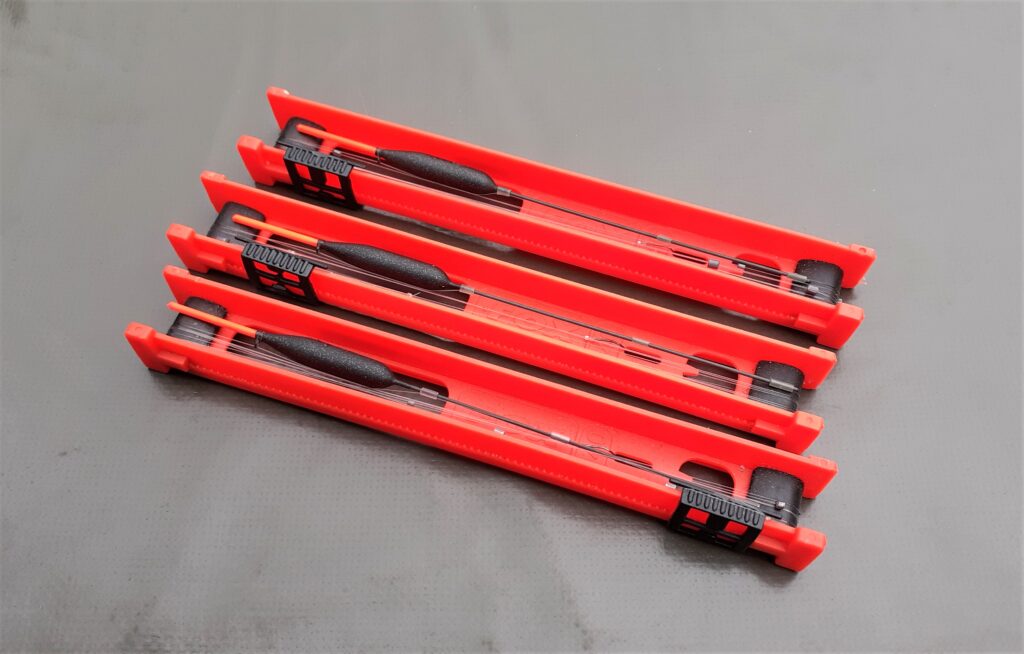
My current favourite pole floats for fishing with pellets in shallow commercials are AS 5 pencil-shaped designs, particularly the smaller 0.1g, 0.2g and 0.3g sizes. These are great when you don’t want loads of shot on rigs when tackling minimal depths. Many of the fish-packed lakes around where I live are only two to three feet deep, so I tend to use just a 0.1g float with a few spread number 11 shot. This gives pellets a natural fall through the water, often bringing an immediate response as the hook bait settles. I haven’t yet managed to break any AS 5 floats, which feature strong coiled wire eyes, along with carbon stems that are securely anchored into quality balsa bodies, the latter sealed with tough acrylic paint. The hollow plastic sight tips are spigotted in too, which also helps robustness. I find these floats okay for carp, but sensitive enough for silvers, which is handy because many of the waters I fish are stuffed with a big variety of species.
CRAFTY CRUCIANS
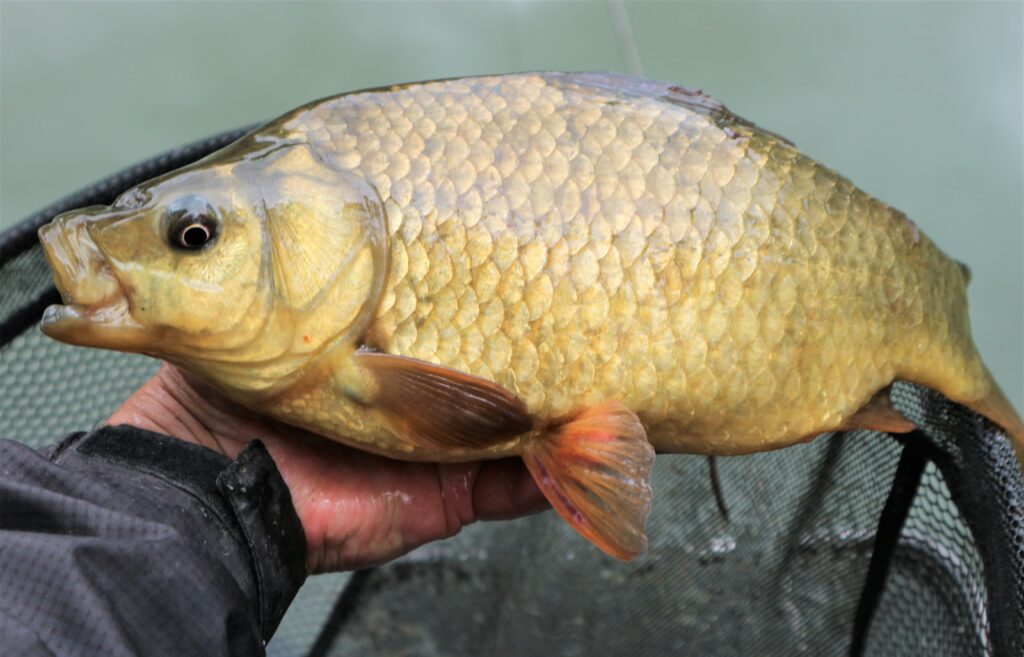
Pellet tactics often attract crucian carp, along with closely related F1s. Both species can be tricky to catch, requiring clever feeding and slightly more refined tackle to have a good day. I love catching crucians and find they particularly like grazing over a bed of micro pellets. I often chop in a few worms, also adding casters and a few bigger 4mm freebies. F1s respond to similar feed, providing you introduce it carefully using the little and often principle. When using pellets to catch shy feeders, it always pays to keep experimenting with hook baits. Maggots can pull bites all day, even when none are being fed. The same applies to sweetcorn, wafters and various hooker pellets. In the latter instance you can use something completely different from what you are feeding. Many anglers experiment with colours and sizes. It never ceases to amaze me how it’s possible to hit on a particular hue that works one day and yet fails miserably next trip.
WHAT WORKS
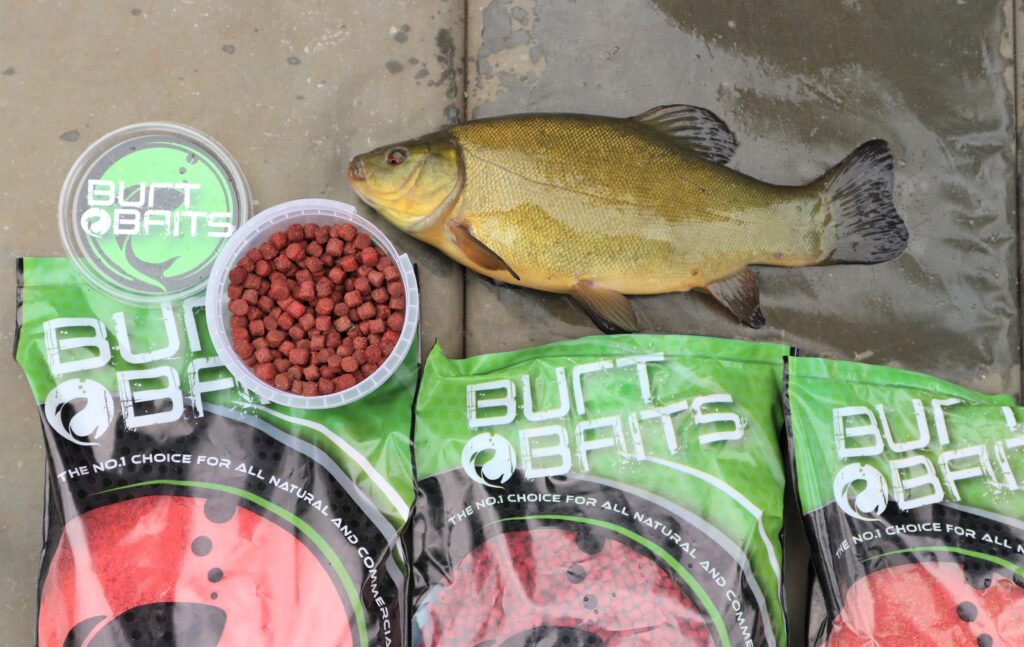
I have recently been doing some work for a bait company, experimenting with many flavours and colours, to find out what performs best for various species. I might go armed with several different types of feed pellets, along with closely related soft hookers, pastes and groundbaits. On a recent tench session I was missing loads of fast bites, something these fish are masters at producing. I tried the old groundbait paste trick, but that failed. I was using a krill recipe laced with similar flavoured micros. I fed some casters, but the swim came alive with rudd. I tried worms but small perch moved in. I couldn’t get maggots to the bottom, or 4mm pellets, there were that many small fish buzzing around. In the end I found dumping my pole rig in with 6mm krill hooker pellets was the answer. Every time one got to the deck it was wolfed down by tench, to begin with, small ones, but very soon my margin pole elastic was being stretched out by a bigger fish.
RED ROUTE
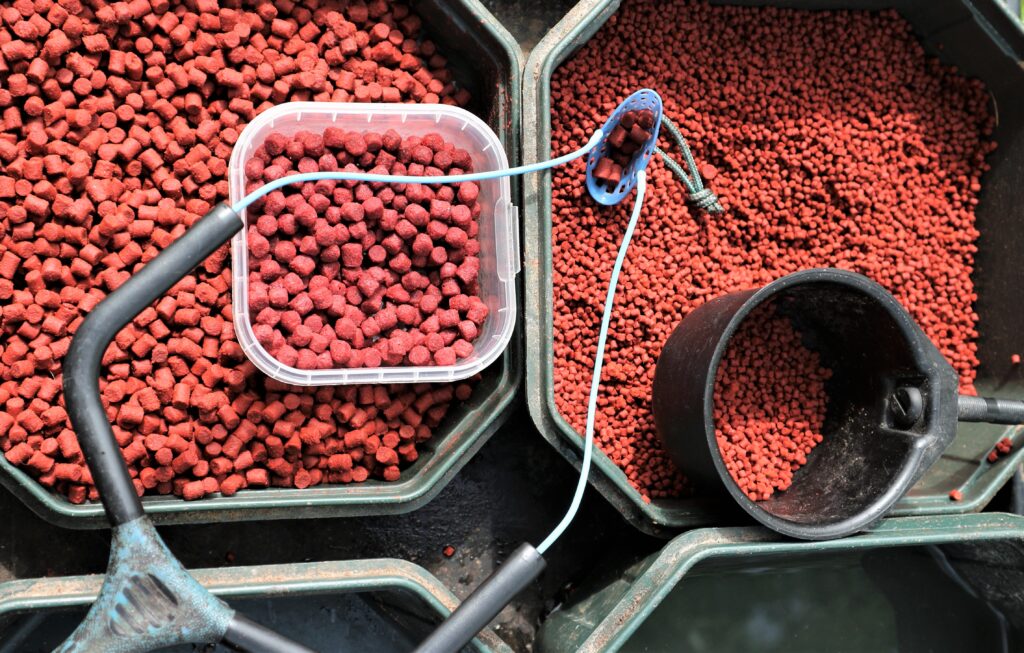
When I’m not sure which type of fish is likely to dominate on waters that hold mixed species, I like to take a red pellet approach. Although some red pellets are designed for carp, they can be brilliant for bream, skimmers and tench – even river fish like chub and barbel. Very often by simply feeding red pellet-based products, I find I can catch using red maggots over the top. I’ve enjoyed countless busy sessions feeding red pellets and fishing similar colour maggots on the hook, bagging up all day without ever feeding any grubs. Baits like worms and casters can be effective too, but unlike maggots, these need to be fed in combination with pellets to work properly. Red groundbait is another option, along with red corn and wafters. Many years ago my number one tench groundbait used to be red Expo from the Van Den Eynde stable, but now so many fishmeal-based groundbaits are used on waters, I find red krill groundbait mixes work better.
SPECIAL MIXES
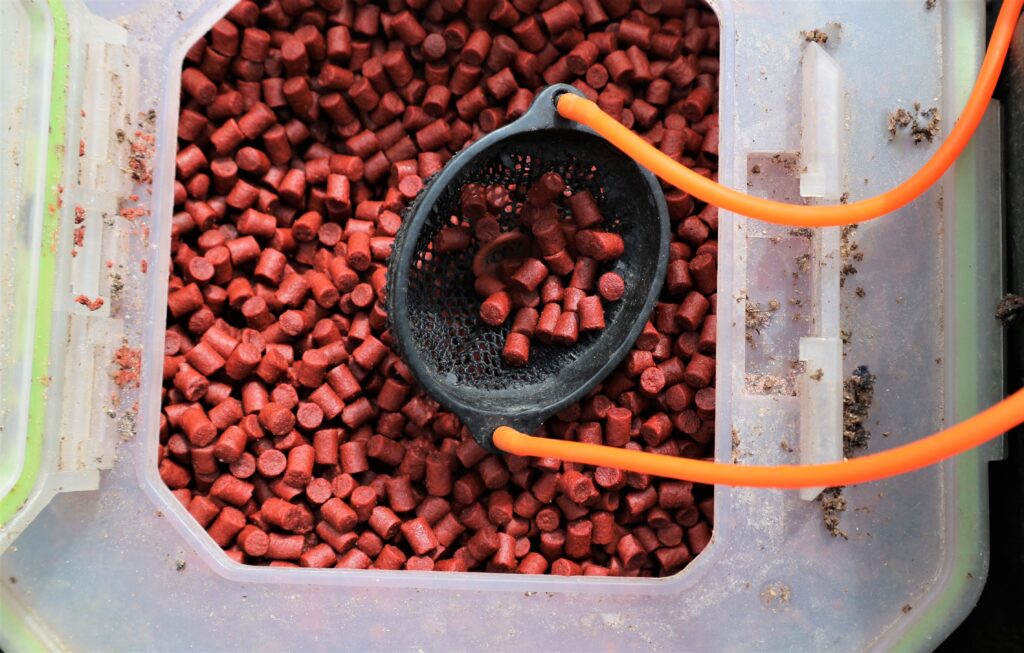
It’s easy to become overwhelmed by what’s on offer in the bait section of tackle shops. Packs and packs of different pellets and related side-products like paste, groundbait and hook offerings. I used to find it frustrating trying to find things that matched up. You got a pellet colour and flavour you liked, but nothing from the same company that combined with it properly. I would end up using several different brands to get close to what I wanted, but never felt completely comfortable with that. It’s changed now and big firms like Dynamite make more complete popular ranges, such as with their famous Robin Red flavour. I can now get Robin Red pellets, groundbait and hookers, which is great! But even then there are lots of mysteries regarding what different types of pellets are supposed to do. I first used Robin Reds not having read the info on the packet, thinking they were superb for bream, not knowing this bait was designed for carp!
WEIRD STUFF
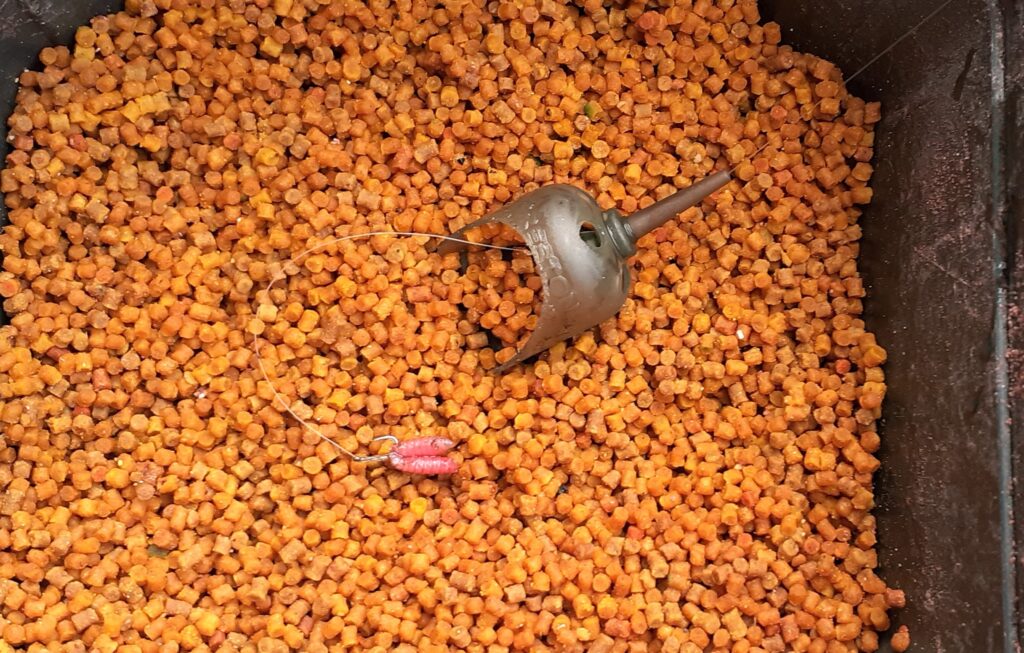
As pellet fishing has gained momentum, some strange flavours have emerged. I laughed when my mate Andy first turned up with bags of chocolate orange pellets. It was the middle of winter and freezing cold. Nobody was getting any bites, apart from Andy who quickly wiped the smile off my face by emptying the lake we were fishing, catching loads of carp and silvers. He gave me a bag and I did the same thing a few days later. The message has got through that high oil fishmeal works better in warm weather when the fish can digest it, while low oil sweet stuff is often better in the cold. I also find that high oil and fishmeal content in groundbait tends to put silver fish off, or at least fill them up quickly. I’ve experimented by diluting recipes with crumb or sweet mixes, which works wonders, keeping sport going a lot longer. Back to chocolate orange. Micro pellet flavoured ones are superb for bream when used with most types of in-line feeders.
HEMP SUBSTITUTE
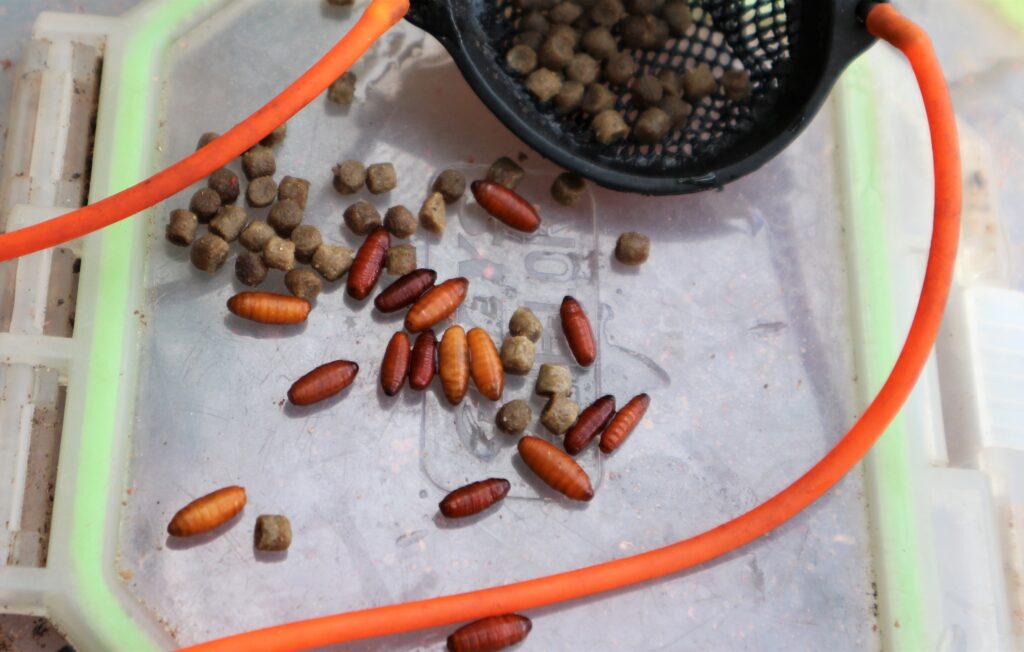
The new breed of sinking expanders from Sonubaits don’t require any pumping. The 2mm size swells up 50% when soaked in water and stays fairly firm. I use these quite a lot instead of hemp when employing conventional waggler tackle on well stocked fisheries. With a powerful catapult, I find these small pellets fire exactly the same distance as maggots or casters. I feed a good bed of them initially, along with a few red maggots to get a quick response. I can then switch to casters to try and find a better stamp of fish. All of this gives me choices of using 4mm or 6mm soft pellets on the hook, or switching between baits like double maggots or single caster, depending on what turns up. If skimmers arrive, directly hooked soft pellets normally do the business. But if they are fussy, a couple of the small expanders often brings positive bites. Maggots and pellets tend to be better for bream and carp, while casters are more effective for roach and tench.
SKIMMER TIME
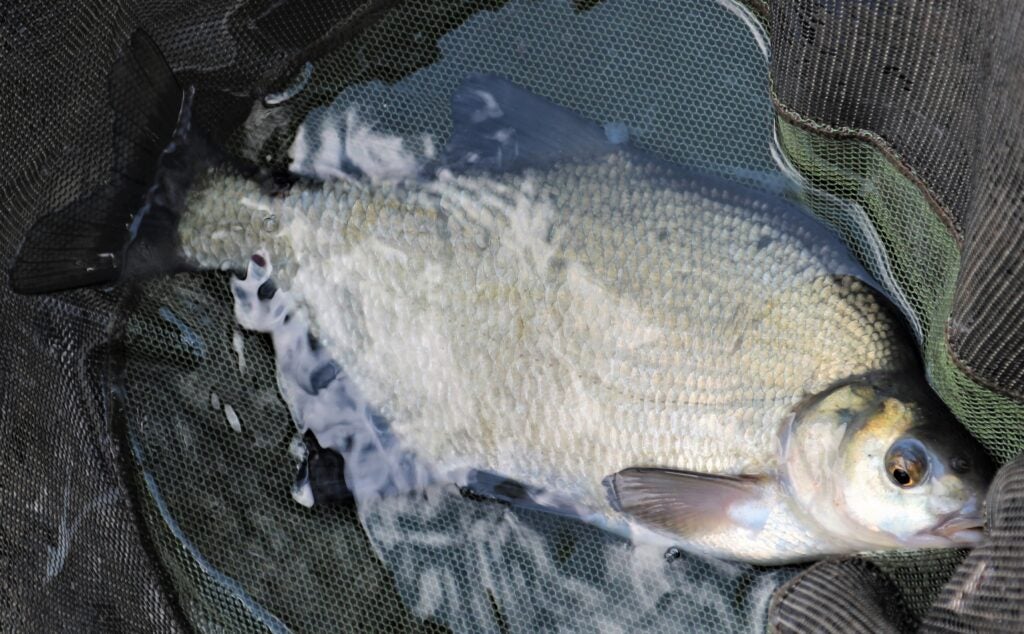
I’ve enjoyed some memorable skimmer hauls using pellet tactics. One of my favourites is to cup in a good bed of micros on a long pole line, mixing in a bit of chopped worm, a few dead reds and some casters. It normally only takes a few minutes before the swim starts fizzing with bubbles. A couple of red maggots on the hook is a good starting ploy. If small fish are a problem, a switch to casters often buys enough time for a big skimmer to find the hook bait. A 4mm or 6mm soft pellet is the next step, but also likely to pull attention from any carp in the area. While it’s great to add bonus fish like this, they do tend to plough up your swim and scatter the skimmers, which will require more micro pellet feed and a bit of time to settle again. A good trick is to feed long pole lines to the left and right of your peg, so you have an undisturbed one to move to if a carp stirs things up. Best micro pellets for skimmers are chocolate orange in winter and red krill in summer.
EXPANDERS EXPLAINED
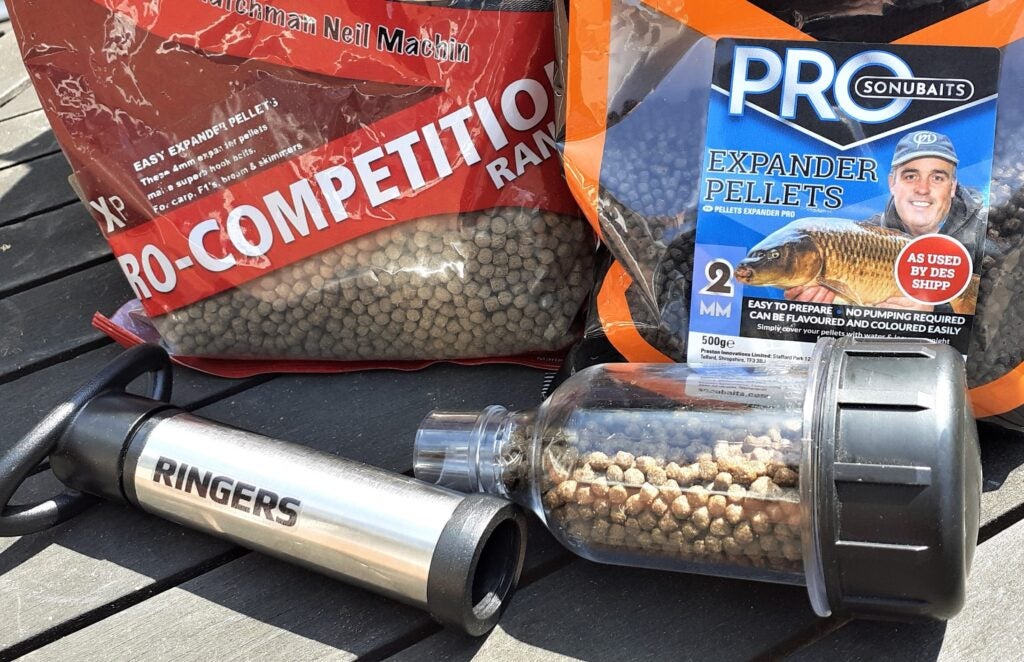
Expander pellets need careful preparation and storage. Standard expanders float, even after being immersed in water. A pump is required to make them sink, but these pellets are unpredictable in the size they can grow to. If expanders are soaked for too long, they might become over-big. The best way to prepare this bait is to only wet it for five minutes, then quickly pump it, drain the water off and seal away in a plastic bag or airtight container. This stops the pellets from swelling up any further, so they stay much closer to their stated gauge. As previously mentioned, a new breed of sinking expanders doesn’t require any pumping. But don’t wet them too long, or they will bloat up, turning soft and mushy. Expanders are great fish activators and bite pullers. My thanks go to John (Crystal Bend), for suggesting the pellet topic. It made me stop and think, suddenly realising how much this bait had altered the way I fish, bringing so many new methods into play.
The post All About Pellets first appeared on FishingMagic Magazine.
Continue reading...

Pellets have gradually changed the way I fish. For the majority of sessions I normally take some of this bait with me, even when I’m primarily using naturals like maggots, casters, hemp or worms. If it’s not going to be an all-out pellet attack, having some in reserve can be a good way of getting out of trouble. Pellets often help to sort out small fish problems, also coming in useful when you stumble across venues that are heavily spodded for carp, which tends to make all the other species reliant on this type of bait. But the main point is, I find I am relying more and more on pellets, which I’m sure is the case with many anglers. They’re a great convenience bait to have with you, whether bagged or boxed. The products have a long lifespan, so they keep well. It’s only when I use pellets exclusively that more serious preparation comes into play, selecting certain sizes, colours, types and flavours, carefully nurturing baits into how I want them to perform.
THE BASICS

Micro pellets are a great way of kick-starting sessions, whether fed neat in a pole cup, mixed with groundbait, or introduced with various types of feeders. Micros make the fish grub around and hold them for long periods. Larger feed pellets need to be fed far more sparingly. The 4mm size is good for mixed species, while 6mm and 8mm grades are better for all-out big fish tactics. Feed pellets sink of their own accord, in both wet or dry form. I prefer to slightly dampen mine, because the infused moisture adds weight and helps gain better catapult distance. Soft, ready-to-use hooker pellets are always a good stand-by, useful if you don’t want to fiddle about with bands and hair rigs. But then we have glugged hookers, dumbbells, mini boilies and wafters, all available in a massive choice of colours, flavours and sizes. Tackle shops are crammed with these choices, which work wonders on the hook as change or main baits when fishing with pellet products.
BETTER HOOKERS

It pays to be fussy with hooker pellets because a lot are simply not up to the task. Don’t bother with super soft or crumbly ones because they won’t stay on the hook very well. But having said that, you also don’t want hooker pellets that are too hard, because fussy fish on heavily pressured waters respond less well to tough baits. I think the consistency of Drennan hook pellets is spot-on, although I don’t like their daft Yum Yums name. Flavours that stand out are Sweet Fishmeal and Crab & Krill. I particularly like the 4mm size, which is perfect for silver fish. Durable Pellets from Dynamite have impressed too, being robust enough to stay attached with waggler or feeder rigs, while soft enough to strike through. I have to say, a lot of so-called hooker pellets I have experimented with have been rubbish, breaking up before I could even get them in the water. The only way to cure over-soft pellets is to air them for an hour, which toughens them up a bit.
PERFECT FLOATS

My current favourite pole floats for fishing with pellets in shallow commercials are AS 5 pencil-shaped designs, particularly the smaller 0.1g, 0.2g and 0.3g sizes. These are great when you don’t want loads of shot on rigs when tackling minimal depths. Many of the fish-packed lakes around where I live are only two to three feet deep, so I tend to use just a 0.1g float with a few spread number 11 shot. This gives pellets a natural fall through the water, often bringing an immediate response as the hook bait settles. I haven’t yet managed to break any AS 5 floats, which feature strong coiled wire eyes, along with carbon stems that are securely anchored into quality balsa bodies, the latter sealed with tough acrylic paint. The hollow plastic sight tips are spigotted in too, which also helps robustness. I find these floats okay for carp, but sensitive enough for silvers, which is handy because many of the waters I fish are stuffed with a big variety of species.
CRAFTY CRUCIANS

Pellet tactics often attract crucian carp, along with closely related F1s. Both species can be tricky to catch, requiring clever feeding and slightly more refined tackle to have a good day. I love catching crucians and find they particularly like grazing over a bed of micro pellets. I often chop in a few worms, also adding casters and a few bigger 4mm freebies. F1s respond to similar feed, providing you introduce it carefully using the little and often principle. When using pellets to catch shy feeders, it always pays to keep experimenting with hook baits. Maggots can pull bites all day, even when none are being fed. The same applies to sweetcorn, wafters and various hooker pellets. In the latter instance you can use something completely different from what you are feeding. Many anglers experiment with colours and sizes. It never ceases to amaze me how it’s possible to hit on a particular hue that works one day and yet fails miserably next trip.
WHAT WORKS

I have recently been doing some work for a bait company, experimenting with many flavours and colours, to find out what performs best for various species. I might go armed with several different types of feed pellets, along with closely related soft hookers, pastes and groundbaits. On a recent tench session I was missing loads of fast bites, something these fish are masters at producing. I tried the old groundbait paste trick, but that failed. I was using a krill recipe laced with similar flavoured micros. I fed some casters, but the swim came alive with rudd. I tried worms but small perch moved in. I couldn’t get maggots to the bottom, or 4mm pellets, there were that many small fish buzzing around. In the end I found dumping my pole rig in with 6mm krill hooker pellets was the answer. Every time one got to the deck it was wolfed down by tench, to begin with, small ones, but very soon my margin pole elastic was being stretched out by a bigger fish.
RED ROUTE

When I’m not sure which type of fish is likely to dominate on waters that hold mixed species, I like to take a red pellet approach. Although some red pellets are designed for carp, they can be brilliant for bream, skimmers and tench – even river fish like chub and barbel. Very often by simply feeding red pellet-based products, I find I can catch using red maggots over the top. I’ve enjoyed countless busy sessions feeding red pellets and fishing similar colour maggots on the hook, bagging up all day without ever feeding any grubs. Baits like worms and casters can be effective too, but unlike maggots, these need to be fed in combination with pellets to work properly. Red groundbait is another option, along with red corn and wafters. Many years ago my number one tench groundbait used to be red Expo from the Van Den Eynde stable, but now so many fishmeal-based groundbaits are used on waters, I find red krill groundbait mixes work better.
SPECIAL MIXES

It’s easy to become overwhelmed by what’s on offer in the bait section of tackle shops. Packs and packs of different pellets and related side-products like paste, groundbait and hook offerings. I used to find it frustrating trying to find things that matched up. You got a pellet colour and flavour you liked, but nothing from the same company that combined with it properly. I would end up using several different brands to get close to what I wanted, but never felt completely comfortable with that. It’s changed now and big firms like Dynamite make more complete popular ranges, such as with their famous Robin Red flavour. I can now get Robin Red pellets, groundbait and hookers, which is great! But even then there are lots of mysteries regarding what different types of pellets are supposed to do. I first used Robin Reds not having read the info on the packet, thinking they were superb for bream, not knowing this bait was designed for carp!
WEIRD STUFF

As pellet fishing has gained momentum, some strange flavours have emerged. I laughed when my mate Andy first turned up with bags of chocolate orange pellets. It was the middle of winter and freezing cold. Nobody was getting any bites, apart from Andy who quickly wiped the smile off my face by emptying the lake we were fishing, catching loads of carp and silvers. He gave me a bag and I did the same thing a few days later. The message has got through that high oil fishmeal works better in warm weather when the fish can digest it, while low oil sweet stuff is often better in the cold. I also find that high oil and fishmeal content in groundbait tends to put silver fish off, or at least fill them up quickly. I’ve experimented by diluting recipes with crumb or sweet mixes, which works wonders, keeping sport going a lot longer. Back to chocolate orange. Micro pellet flavoured ones are superb for bream when used with most types of in-line feeders.
HEMP SUBSTITUTE

The new breed of sinking expanders from Sonubaits don’t require any pumping. The 2mm size swells up 50% when soaked in water and stays fairly firm. I use these quite a lot instead of hemp when employing conventional waggler tackle on well stocked fisheries. With a powerful catapult, I find these small pellets fire exactly the same distance as maggots or casters. I feed a good bed of them initially, along with a few red maggots to get a quick response. I can then switch to casters to try and find a better stamp of fish. All of this gives me choices of using 4mm or 6mm soft pellets on the hook, or switching between baits like double maggots or single caster, depending on what turns up. If skimmers arrive, directly hooked soft pellets normally do the business. But if they are fussy, a couple of the small expanders often brings positive bites. Maggots and pellets tend to be better for bream and carp, while casters are more effective for roach and tench.
SKIMMER TIME

I’ve enjoyed some memorable skimmer hauls using pellet tactics. One of my favourites is to cup in a good bed of micros on a long pole line, mixing in a bit of chopped worm, a few dead reds and some casters. It normally only takes a few minutes before the swim starts fizzing with bubbles. A couple of red maggots on the hook is a good starting ploy. If small fish are a problem, a switch to casters often buys enough time for a big skimmer to find the hook bait. A 4mm or 6mm soft pellet is the next step, but also likely to pull attention from any carp in the area. While it’s great to add bonus fish like this, they do tend to plough up your swim and scatter the skimmers, which will require more micro pellet feed and a bit of time to settle again. A good trick is to feed long pole lines to the left and right of your peg, so you have an undisturbed one to move to if a carp stirs things up. Best micro pellets for skimmers are chocolate orange in winter and red krill in summer.
EXPANDERS EXPLAINED

Expander pellets need careful preparation and storage. Standard expanders float, even after being immersed in water. A pump is required to make them sink, but these pellets are unpredictable in the size they can grow to. If expanders are soaked for too long, they might become over-big. The best way to prepare this bait is to only wet it for five minutes, then quickly pump it, drain the water off and seal away in a plastic bag or airtight container. This stops the pellets from swelling up any further, so they stay much closer to their stated gauge. As previously mentioned, a new breed of sinking expanders doesn’t require any pumping. But don’t wet them too long, or they will bloat up, turning soft and mushy. Expanders are great fish activators and bite pullers. My thanks go to John (Crystal Bend), for suggesting the pellet topic. It made me stop and think, suddenly realising how much this bait had altered the way I fish, bringing so many new methods into play.
The post All About Pellets first appeared on FishingMagic Magazine.
Continue reading...
